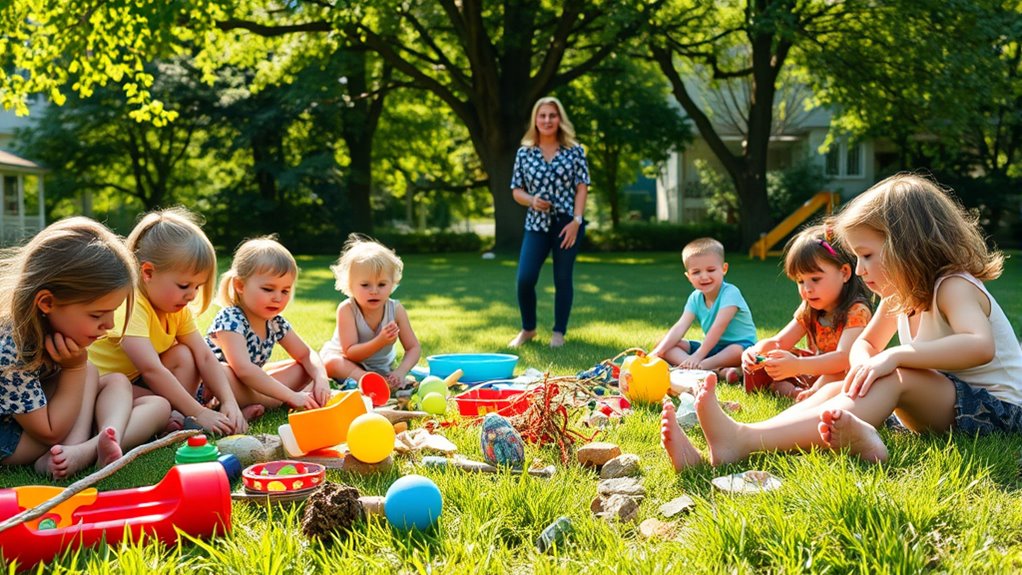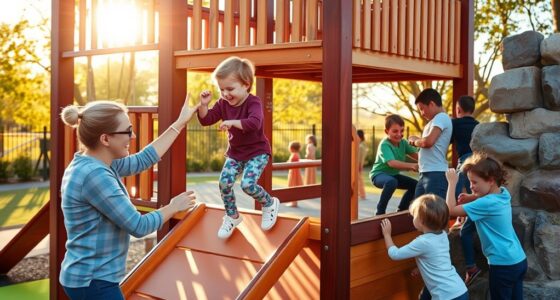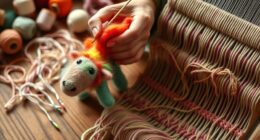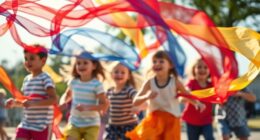To document learning from play without worksheets, focus on observing children’s natural behaviors, interactions, and problem-solving strategies during activities. Take quick notes, photos, or videos that capture these moments and create portfolios showcasing their progress over time. Pay attention to how they approach tasks and persist through challenges, emphasizing their process rather than just the finished product. Exploring these methods further can help you gain deeper insights into each child’s growth and development.
Key Takeaways
- Use observational notes, photos, or videos during play to capture authentic learning moments.
- Create portfolios of children’s work to document progress over time without relying on worksheets.
- Focus on process-based documentation, noting strategies, problem-solving, and emotional responses.
- Record spontaneous behaviors and interactions in natural settings for richer insights into development.
- Incorporate ongoing informal assessments through regular observations and reflections rather than structured tests.
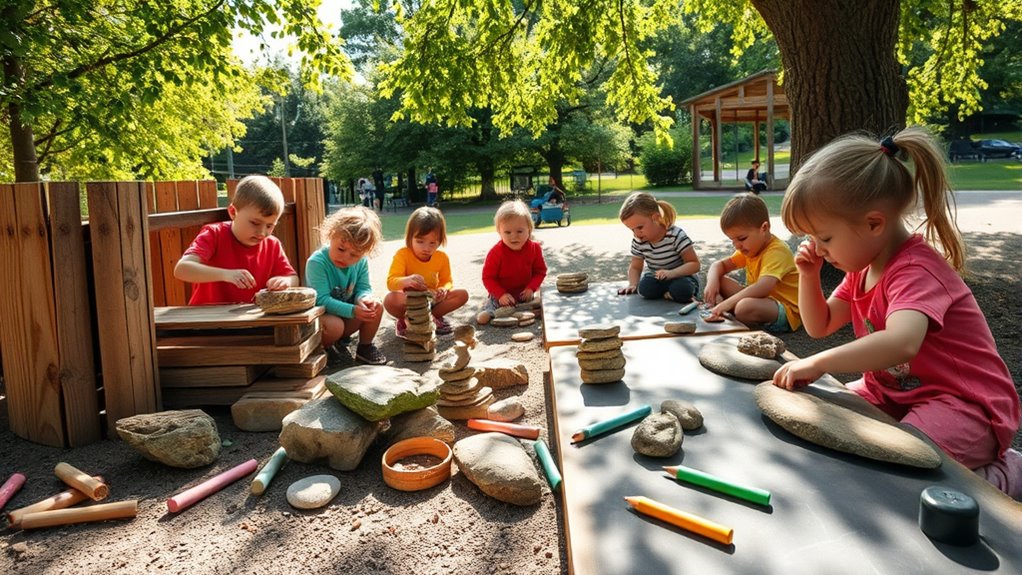
Play is a vital way children explore, experiment, and develop new skills, making it essential to document their learning along the way. When you observe children during play, you’re not just watching—they’re actively demonstrating their understanding, creativity, and problem-solving abilities. Using a play-based assessment approach allows you to gather meaningful insights without relying on traditional worksheets. Instead, you focus on informal observation, paying close attention to how children interact with their environment, peers, and materials. This method provides a richer, more authentic picture of their developmental progress because it captures their natural behavior in familiar settings.
With informal observation, you can notice how children approach different tasks, what interests them most, and how they adapt to challenges. As they build with blocks, pretend in role-play, or manipulate art supplies, you’re gaining a window into their cognitive, social, and emotional growth. These observations are often spontaneous and unstructured, giving you a genuine sense of their abilities without the pressure of formal assessments. Documenting these moments might involve jotting down quick notes, taking photos or videos, or creating portfolios of their work over time. This approach helps you track progress over days, weeks, and months, providing context that a standard worksheet simply can’t offer.
Play-based assessment emphasizes the importance of observing children in their natural environment. It encourages you to look beyond the end result and focus on the process. For example, instead of marking whether a child can complete a puzzle, you observe how they approach the task—do they try different strategies? Do they persist when they encounter difficulty? These insights reveal a lot about their problem-solving skills, patience, and confidence. Informal observation also promotes a child-centered approach, where learning is viewed as a continuous, dynamic process. It allows you to adapt your teaching strategies based on what you see, supporting individual growth. Additionally, understanding that resources and tools can significantly enhance play experiences helps facilitate richer observations and learning opportunities.
Frequently Asked Questions
How Can Parents Encourage Spontaneous Documentation During Play?
You can encourage spontaneous documentation during play by keeping a play journal and noting down observations as they happen. Use simple play journal ideas like quick sketches or short notes about what your child does. During play, stay attentive and make spontaneous observations, capturing moments in real-time. This approach helps you record your child’s learning naturally, fostering a deeper understanding of their development without interrupting their play.
What Tools Are Best for Informal Learning Documentation?
You should use digital portfolios and photo journaling as the best tools for informal learning documentation. Digital portfolios allow you to collect and organize your child’s work easily, showcasing their growth over time. Photo journaling captures spontaneous moments and conversations during play, providing visual evidence of their learning. Both tools are simple to set up, accessible, and encourage ongoing reflection, making documentation natural and engaging for both you and your child.
How Do I Share Play-Based Learning With Other Educators?
Ever thought about how spontaneous sharing can showcase your playful assessments? You simply share photos, videos, or stories of children engaged in play with fellow educators via emails, messaging apps, or shared digital folders. You could also organize informal meetings or quick presentations during staff meetings. These methods highlight how children learn through play, making it easier for others to see the value of play-based learning and celebrate your innovative approach.
What Are Common Challenges in Documenting Unstructured Play?
You might face observation techniques and documentation challenges when recording unstructured play. It’s tricky to capture spontaneous moments accurately without predefined checklists. You need to stay attentive and flexible, using detailed notes or photos to document learning. Avoid distractions, focus on what children do naturally, and reflect on their skills and interests. Being consistent and patient helps overcome challenges, giving you a clearer picture of their development through authentic play experiences.
How Can Children Reflect on Their Own Learning Experiences?
You can help children reflect on their learning by encouraging creative journaling, where they draw or write about their play experiences. Facilitate peer reflection sessions, allowing children to share insights and listen to others’ perspectives. This approach fosters self-awareness and communication skills, making reflection engaging and meaningful. By integrating creative journaling and peer reflection, you empower children to recognize their growth and deepen their understanding of their own learning journey.
Conclusion
By ditching worksheets and embracing authentic play, you open a world where learning becomes an unstoppable force of wonder. Every moment of spontaneous discovery isn’t just a tiny step—it’s a giant leap toward incredible growth. When you document these joyful experiences, you’re capturing the magic that transforms ordinary play into extraordinary learning adventures. Believe me, this shift will revolutionize your teaching, making every day feel like an epic journey of boundless curiosity and limitless potential.

